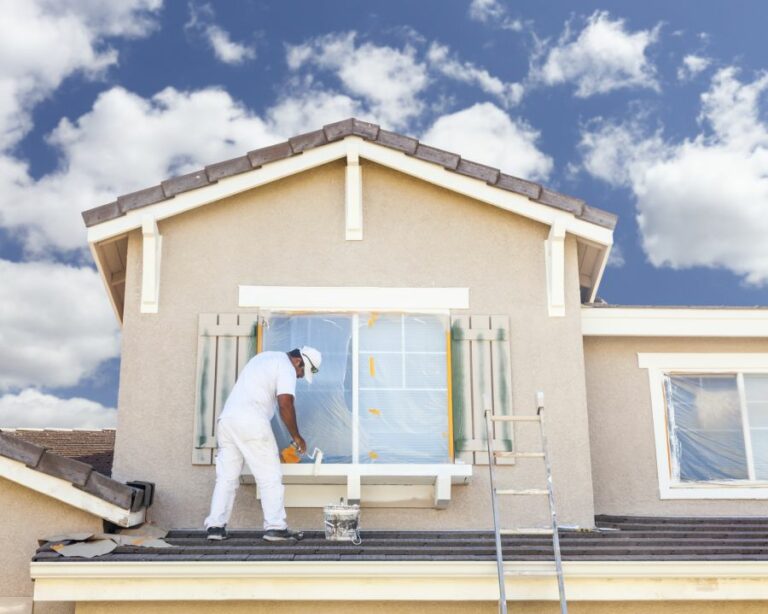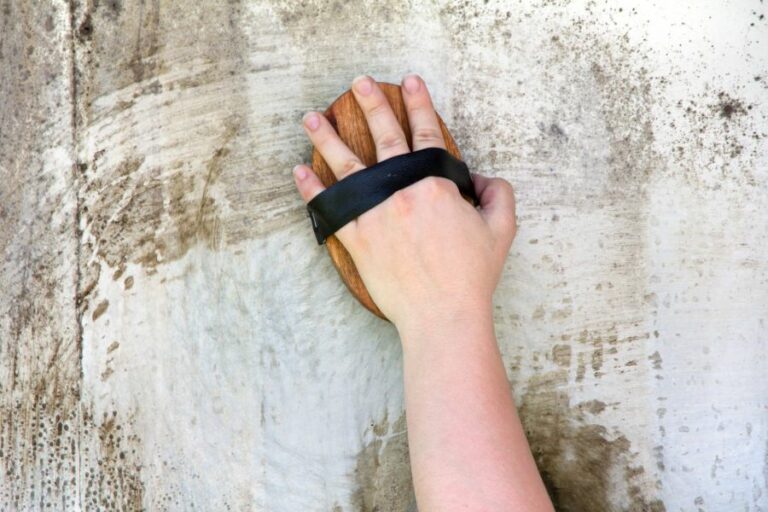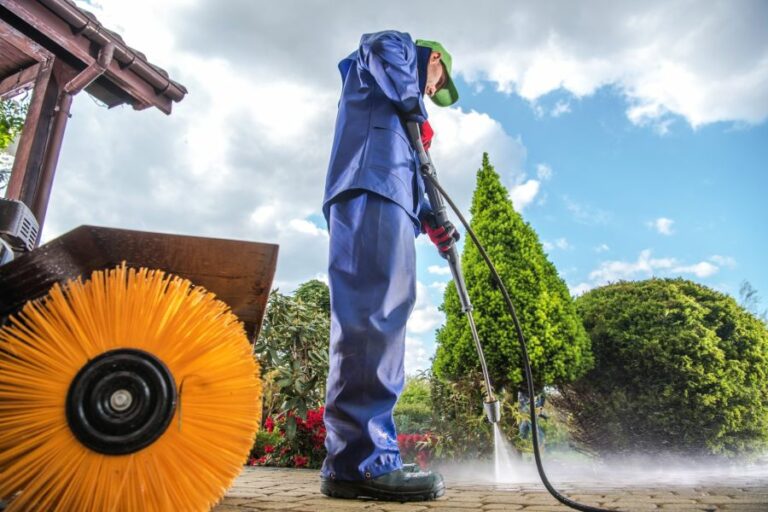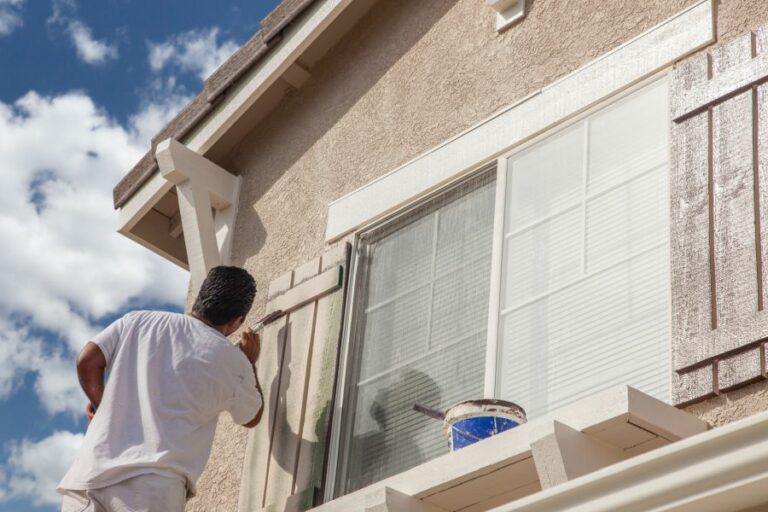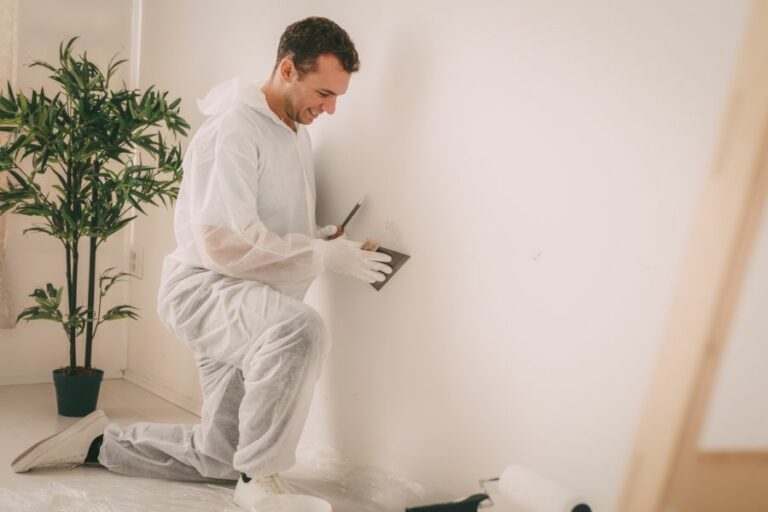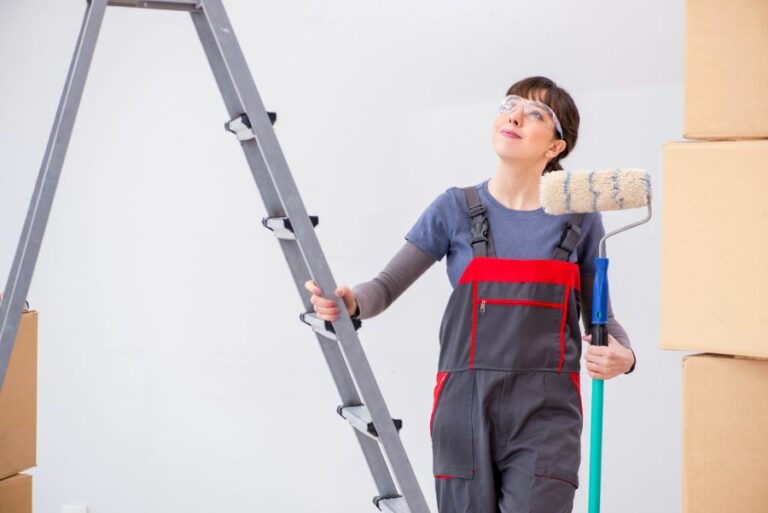Effective Moisture Barriers In Surface Prep
Are you struggling with moisture-related concerns in your surface preparation projects? Worry no more! We are here to provide valuable insights and proven techniques to establish effective moisture barriers in surface prep. We understand that excessive moisture can lead to problems such as peeling paint, mold growth, and structural damage.
Effective moisture barriers in surface prep:>
Effective moisture barriers are essential in surface preparation to prevent water damage and ensure the durability of construction projects. Common types include vapor barriers, house wraps, liquid-applied barriers, and cementitious waterproofing. Proper installation and maintenance, including following manufacturer guidelines, ensuring overlap, using compatible tapes and sealants, and regular inspections, are crucial for optimal performance.

Discover the importance of effective moisture barriers in surface preparation and learn how to ensure your projects have a durable and reliable moisture protection system. Keep reading to unlock the secrets to a successful moisture barrier installation and boost your project’s longevity.
Contents
- 1 Efficient Moisture Barriers for Surface Preparation
- 2 Ideal Moisture Barrier: Which One to Choose?
- 3 Optimal Moisture Barrier Solutions for Use
- 4 Top Concrete Floor Moisture Barrier Options
- 5 The Necessity of Moisture Barriers Under Laminate Flooring
Efficient Moisture Barriers for Surface Preparation
Moisture control is a key factor in the success and durability of numerous construction projects. Surface preparation, being a crucial step, requires utmost care in addressing moisture-related issues.
• Why Moisture Barriers are Essential
Moisture can cause significant damage to various aspects of a construction project. It can lead to mold and mildew growth, cause wood rot, reduce the R-value of insulation, and weaken the structural integrity of the overall building.
Moreover, water vapor can lead to unsightly and costly issues such as blistering or peeling paint, warping of flooring materials, and rusting of metal components.
To avoid these issues and ensure a long-lasting, stable structure, effective moisture barriers must be incorporated into surface preparations.
• Types of Moisture Barriers
There are several types of moisture barriers to consider when prepping surfaces. The most common types are:
– Vapor Barriers
Vapor barriers are designed to prevent the passage of water vapor from one side of the material to the other. They are typically made of polyethylene film or sheeting, which is impermeable to moisture.
Vapor barriers are used in various areas of a building, such as under concrete slabs, in crawlspaces, and between the exterior sheathing and insulation in walls.
– House Wraps
House wraps serve as a combination of vapor barrier and air barrier, offering protection from both moisture and air infiltration. They are made of spun-bonded polyolefin or polypropylene fabric and are installed over the exterior sheathing and under the siding, stucco, or stone veneer.
They allow water vapor to escape from the interior while preventing bulk water penetration from the exterior environment, ensuring a dry and energy-efficient building envelope.
– Liquid-Applied Barriers
Liquid-applied barriers are waterproofing membranes applied in liquid form directly to the surface of construction materials, such as concrete or plywood.
After application, these barriers dry to form a continuous, monolithic, and impermeable layer. This type of moisture barrier is commonly used for foundation walls, balconies, and roof surfaces.
– Cementitious Waterproofing
Cementitious waterproofing is a type of moisture barrier that uses a blend of cement, sand, and other additives to create a waterproof surface.
This method is often used for below-grade applications such as basements and foundation walls, as well as water-containing structures like swimming pools, reservoirs, and manholes.
• Tips on Installation and Maintenance
To ensure that moisture barriers perform effectively, proper installation and maintenance are crucial. Here are some recommendations from my experience:
- Follow manufacturer guidelines: Always consult and adhere to the manufacturer’s installation instructions for the specific type of moisture barrier you are using. These guidelines will provide you with the most accurate and relevant information for optimal performance.
- Ensure proper overlap: When installing sheeting materials such as vapor barriers or house wraps, it is essential to overlap seams by 6 to 12 inches, depending on the manufacturer’s recommendation. This prevents moisture from penetrating through gaps in the barrier.
- Use compatible tapes and sealants: To seal seams and penetrations, make sure you use tapes and sealants that are compatible with the material of the moisture barrier. Various products are manufactured specifically for this purpose and can be found easily in your local hardware store or on the manufacturer’s website.
- Regular inspections: Conduct periodic inspections of your moisture barriers, especially after significant weather events or when making adjustments and modifications to the building envelope. If you notice any damage or degradation, address it immediately to prevent moisture infiltration.
- Consider drainage: Moisture barriers should be installed in conjunction with proper drainage systems, particularly for below-grade applications. Drainage methods such as weeping tile systems, French drains, or exterior drainage membranes can minimize moisture build-up against foundation walls and prevent water infiltration.
• Moisture Barrier Resources
For more information on effective moisture barriers, check the Whole Building Design Guide, a comprehensive resource for construction professionals provided by the National Institute of Building Sciences.
This site offers in-depth content on moisture control and barrier solutions for various building applications.
• Final Thoughts
Proper moisture barriers play a pivotal role in surface preparation, helping protect the building envelope from water damage and ensuring a durable construction.
By understanding the different types of moisture barriers, adhering to installation guidelines, and conducting regular inspections, building owners and professionals can ensure a long-lasting, energy-efficient, and comfortable structure for years to come.
Ideal Moisture Barrier: Which One to Choose?
Moisture barriers play an essential role in maintaining the quality, safety, and energy efficiency of your home. Selecting the right type of moisture barrier can make all the difference in avoiding moisture-related issues.
• Understanding Moisture Barriers
A moisture barrier, also known as a vapor barrier or vapor retarder, is a material specifically designed to prevent moisture from entering a building.
Proper moisture barrier installation is crucial in preventing structural damage, mold growth, and reduced energy efficiency which can result from excess moisture within a building envelope.
It’s important to evaluate your specific needs before selecting a moisture barrier. Factors to consider include your building’s local climate, construction materials, and budget.
• Types of Moisture Barriers
There are several types of moisture barriers available, each with its own set of advantages and possible limitations. The following sections offer a brief overview of the options available and tips for selecting the best moisture barrier for your project.
– Polyethylene Sheet Vapor Barriers
Polyethylene sheeting is a common and cost-effective choice for moisture barriers. This type of barrier is composed of a thin plastic sheet, typically available in thicknesses ranging from 4 to 10 mil.
Polyethylene sheet vapor barriers are easy to install and provide ample protection against moisture infiltration.
I recommend using at least a 6-mil polyethylene sheet for residential applications and opting for a thicker material, such as 10 mil, for commercial or industrial applications. Remember to properly seal seams and edges to ensure maximum effectiveness.
– House Wrap Moisture Barriers
House wraps are advanced moisture barriers made from high-density polyethylene or polypropylene materials.
They provide excellent resistance to both air and water infiltration while still allowing for the passage of moisture vapor, thus reducing the risk of condensation buildup within a building envelope.
Although house wraps are more expensive than polyethylene sheet barriers, their performance in preventing moisture ingress can be worth the investment.
For regions with high annual rainfall levels and humidity, I highly recommend investing in a high-quality house wrap to ensure long-term protection against moisture.
– Liquid-Applied Vapor Barriers
Liquid-applied vapor barriers are an alternative form of moisture protection that utilizes specially formulated coatings to create a seamless protective membrane over a building’s exterior surfaces.
This type of moisture barrier is particularly effective for irregular or hard-to-reach areas that may be challenging for more traditional barrier materials.
While liquid-applied vapor barriers offer excellent performance against moisture, they can be more expensive and labor-intensive to install compared to other options. If budget constraints are a concern, you may want to consider other alternatives, such as polyethylene sheeting or house wraps.
– Asphalt-Coated Moisture Barriers
Asphalt-coated moisture barriers are an older option that involves the application of a layer of asphalt-impregnated roofing felt, building paper, or fiberglass onto exterior walls. This type of barrier offers good moisture protection and is relatively easy to install.
Keep in mind that asphalt-coated moisture barriers are less efficient and less durable compared to modern alternatives such as house wraps and liquid-applied barriers. I generally do not recommend this type of barrier as a first choice for new construction or major renovation projects.
• Ensuring Proper Moisture Barrier Installation
Regardless of the type of moisture barrier you select, it’s crucial to ensure proper installation to maximize its effectiveness. Some guidelines to keep in mind include the following:
- Properly sealing all seams, penetrations, and edges with a compatible sealant or tape.
- Providing a continuous moisture barrier system by extending the barrier material up to and around any structural penetrations.
- Installing the moisture barrier on the right side of the insulation layer to prevent condensation within the building envelope.
For helpful, comprehensive information on proper moisture barrier installation, I recommend referring to the Environmental Protection Agency’s guidance on moisture control.
• Conclusion
Selecting the best type of moisture barrier for your home should be a careful and informed decision that takes into consideration local climate, construction materials, and budgetary constraints.
By fully understanding the options available and ensuring proper installation techniques are utilized, you can protect your home against the damaging effects of excess moisture and maintain its longevity and energy efficiency for years to come.
Type | Description | Pros | Cons |
|---|---|---|---|
House Wrap | A synthetic material used to protect buildings from moisture intrusion. | Lightweight, easy to install, and effective at reducing air infiltration. | It can be prone to tearing and may not provide the best seal in all situations. |
Vapor Barrier Paint | A paint-like substance that creates a vapor barrier on the interior surface of walls. | Easy to apply, cost-effective, and provides some additional insulation value. | It may not be as effective in high-humidity areas and typically requires regular reapplication. |
Polyethylene Sheet | A plastic sheet that is commonly used as a moisture barrier in construction. | Highly effective at preventing moisture intrusion, durable, and widely available. | It can be challenging to install correctly and may trap moisture in wall assemblies if not properly vented. |
Bituminous Membrane | A waterproofing membrane made of asphalt, typically used on roofs and foundations. | Highly effective at preventing water intrusion, durable, and provides excellent waterproofing capabilities. | It can be more expensive than other options, may require professional installation, and is primarily suited for flat or low-slope surfaces. |
Optimal Moisture Barrier Solutions for Use
Moisture management is a critical component in construction, as excessive moisture can lead to the rotting and deterioration of structures, mold growth, and diminished indoor air quality. For this reason, moisture barriers are crucial components in both residential and commercial building projects.
• What Are Moisture Barriers?
Moisture barriers, also referred to as vapor barriers or vapor retarders, are materials used to prevent the movement of water vapor through a building’s walls, ceilings, and floors.
By slowing the transfer of moisture, these barriers help maintain indoor humidity levels and protect building materials from damage.
• Types of Moisture Barriers
There are multiple types of moisture barriers available, each with unique properties and advantages.
– Polyethylene Sheet (Plastic Sheeting)
Polyethylene sheeting is one of the most common and cost-effective moisture barrier options. This plastic sheeting provides a good moisture and air barrier and is often used as a vapor retarder in residential construction projects.
The thickness of the sheeting can vary, but the most commonly used options are 4, 6, or 10 mils thick.
– Liquid-Applied Barriers
Liquid-applied barriers are a newer option for moisture management, offering seamless, continuous protection for building surfaces. These barriers can be applied with a brush, roller, or sprayer and cured to form a durable, flexible membrane.
Liquid-applied barriers are typically composed of synthetic rubber or acrylic resins, offering excellent adhesion to various substrates such as concrete, masonry, or wood.
The Building Science Corporation provides an excellent resource for understanding the importance and application of vapor barriers in various building scenarios.
– Insulation Integrated with Moisture Barrier
Some insulation products, such as rigid foam boards and spray foam insulation, present an integrated moisture barrier. These products have an inherent capacity to resist moisture vapor transmission, making the use of additional vapor barriers unnecessary in some cases.
• Choosing the Right Moisture Barrier for Your Project
When selecting a moisture barrier for your project, it’s essential to consider factors including climate, building use, and the building components adjacent to the moisture barrier. Here are some practical tips to help guide your decision:
1. Evaluate Your Regional Climate Conditions
Different moisture barrier materials provide varying levels of permeability, and specific climates benefit from different types of barriers.
In general, colder climates require more robust vapor barriers, while warmer climates may benefit from materials with greater permeability that allows for some moisture transfer.
2. Recognize Building Usage
Consider the use of the building when selecting a moisture barrier. A space that requires strict humidity control, such as a museum or a data center, will need a more impermeable moisture barrier compared to spaces with less stringent requirements.
3. Follow Building Codes and Industry Best Practices
Ensure your moisture barrier selection adheres to local building codes and industry best practices. These codes and recommendations can guide you in selecting the appropriate materials for your specific region and building type.
4. Coordinate with Adjacent Components
Keep in mind the building components adjacent to the moisture barrier, as they may affect the moisture barrier’s performance.
Certain materials, such as concrete and conditioned interior spaces, have specific requirements when it comes to moisture barriers. Ensure that the selected moisture barrier is compatible with these components.
5. Consult a Professional
If you’re unsure of the best moisture barrier for your project, consult with a building scientist or construction professional experienced in moisture control. Their expertise can ensure the proper selection and application of the moisture barrier in your building project.
• Final Thoughts
Selecting the right moisture barrier is crucial for the longevity and integrity of your building project.
By understanding the available options and considering critical factors such as climate, building use, and adjacent components, you can make an informed decision that will protect your investment and ensure a comfortable, safe, and durable building for years to come.
Moisture Barrier | Description |
|---|---|
Plastic sheeting | Thin sheets of plastic that can be cut and adjusted to cover surfaces and act as a barrier. |
Vapor barrier paint | Special waterproof paint designed to inhibit moisture transfer through walls and ceilings. |
House wrap | A synthetic material used to wrap the exterior of a building, providing a barrier against air and water. |
Rigid foam insulation | Boards made from a type of foam material that provide both insulation and moisture protection. |
Roofing felt | A heavy-duty paper roll material that is applied to roof decking to prevent moisture damage. |
Top Concrete Floor Moisture Barrier Options
Concrete floors are a popular choice for their durability and versatility, but they also have a downside: their porous nature makes them prone to absorbing moisture.
This can lead to a host of problems, such as mold, mildew, and other hazardous air contaminants, as well as damage to your floor or any flooring materials placed over it.
To protect your investment and promote a healthy living environment, it’s essential to install an effective moisture barrier on your concrete floor.
• Liquid Applied Moisture Barriers
Liquid applied moisture barriers, also known as concrete sealers or curing agents, are coatings that are applied directly onto the concrete surface.
These coatings work by penetrating the pores of the concrete, effectively sealing them to prevent moisture from seeping in. Some popular types of liquid-applied moisture barriers include:
1. Silicate Sealers
Silicate sealers are a common choice due to their affordability and ease of application. They penetrate deep into the concrete, chemically reacting with the calcium hydroxide present in the material. This reaction creates a solid crystalline structure that effectively blocks moisture.
Silicate sealers are ideal for concrete floors in basements, garages, and other areas with minimal foot traffic. They are not recommended for use in areas with heavy foot traffic, as they can wear down and lose their effectiveness over time.
2. Acrylic Sealers
Acrylic sealers are another popular option, offering a quick-drying and durable solution. They are available in both water-based and solvent-based formulas, with water-based options being more environmentally friendly.
Acrylic sealers form a film on the surface of the concrete, providing a barrier against moisture and protecting the floor from wear and tear. They are suitable for indoor and outdoor use and offer the added benefit of enhancing the appearance of the concrete by adding a glossy or matte finish.
3. Epoxy Coatings
Epoxy coatings are a more heavy-duty option that provides excellent moisture protection as well as a long-lasting and attractive finish. These coatings consist of a two-part system, with a resin and a hardener that are mixed together and applied to the concrete surface.
Epoxy coatings form an impermeable layer that effectively seals off moisture while also providing resistance to chemical spills, abrasions, and impact damage.
They are most commonly used in commercial and industrial settings but are also suitable for residential applications with high traffic or moisture exposure concerns.
You can learn more about the types, applications, and benefits of liquid moisture barriers from the Portland Cement Association.
• Sheet Applied Moisture Barriers
Sheet-applied moisture barriers, also known as vapor barriers or vapor retarders, are sheets of plastic or rubber material that are laid beneath the concrete floor to prevent moisture from migrating up into the concrete from the ground below.
There are several types of sheet-applied moisture barriers, including:
4. Polyethylene Sheet (Visqueen)
Polyethylene sheeting, also known as Visqueen, is the most commonly used sheet applied moisture barrier. It is made from high-density polyethylene (HDPE) or low-density polyethylene (LDPE) and is available in various thicknesses, typically ranging from 6 to 15 mils.
Although 6-mil polyethylene is often cited as the minimum required thickness, many experts recommend using a 10-mil or thicker sheet for better protection.
Polyethylene sheeting is easy to install, relatively affordable, and known for its durability and effectiveness in protecting concrete floors from moisture.
5. Rubberized Asphalt Membrane
Rubberized asphalt membranes are another sheet-applied moisture barrier option that offers a self-adhering, flexible material. They consist of a layer of rubberized asphalt compound sandwiched between two layers of high-density polyethylene or polyester film.
Rubberized asphalt membranes provide excellent protection against moisture and are known for their ability to seal around penetrations, such as pipes and footings. However, they tend to be more expensive than polyethylene sheeting and can be more challenging to install.
Whichever type of moisture barrier you choose for your concrete floor, always ensure proper installation and consideration for the specific needs of your space. Ensuring a dry and durable concrete floor will protect your investment and contribute to a healthier living environment.
Type | Description | Pros | Cons |
|---|---|---|---|
Polyethylene Sheet (Visqueen) | Plastic sheeting used as a vapor barrier on concrete floors. | Easy to install, cost-effective, and widely available. | It can puncture or tear easily and may not be suitable for heavy-duty use. |
Rubber/Sheet Vinyl Moisture Barriers | A flexible, waterproof membrane applied directly to the concrete floor. | Durable, resistant to punctures and tears, and suitable for heavy-duty use. | It may be more expensive and requires professional installation. |
Epoxy Coating | A two-component liquid coating that is applied to the concrete floor and cures to form a hard, moisture-resistant barrier. | Durable, long-lasting, and low-maintenance. | Requires professional installation and careful surface preparation. |
Concrete Sealer | A penetrating or topical chemical treatment applied to the concrete floor. | Cost-effective, easily applied, and can improve the appearance of the concrete floor. | Less effective in areas with high moisture levels and may need to be reapplied over time. |
The Necessity of Moisture Barriers Under Laminate Flooring
The short answer to the question, “Do you have to put a moisture barrier under laminate flooring?” is yes. A moisture barrier, also known as an underlayment or vapor barrier, is an essential component of any successful laminate flooring installation.
It serves to protect the flooring from moisture, which can lead to warping, buckling, and other issues that can ultimately compromise the lifespan and appearance of your laminate floors.
• The Importance of a Moisture Barrier
Laminate flooring is made up of multiple layers of material, including a decorative top layer, a durable core layer, and a backing layer that provides structural stability.
While these layers are designed to resist moisture to some extent, they are not entirely waterproof. Moisture can seep through the joints between the flooring planks or through any gaps or cracks in the subfloor.
When moisture accumulates under laminate flooring, it can lead to a number of issues, such as:
- Swelling and expansion of the flooring planks
- Warping or buckling of the floors
- The growth of mold and mildew, which can pose health risks
- Damage to the subfloor itself
To prevent these issues, it is crucial to include a moisture barrier during the installation of laminate flooring. This barrier will act as a line of defense against moisture, keeping your floors looking great and lasting longer.
• Types of Moisture Barriers
There is a wide range of moisture barriers available on the market, with varying levels of performance, price, and ease of installation. Some of the most common types include:
– Polyethylene Sheeting
This is a simple, inexpensive option that consists of a thin sheet of plastic. It is typically available in large rolls and is easy to install by simply rolling it out over the subfloor before laying down the laminate planks.
While polyethylene sheeting can be an effective moisture barrier, it does not offer any additional benefits such as cushioning or sound absorption.
– Foam Underlayment
Foam underlayments are slightly thicker than polyethylene sheeting and provide a bit more cushioning and comfort underfoot. They are usually made from closed-cell polyethylene or polypropylene foam and can come in rolls or interlocking tiles.
Some foam underlayments also feature an attached moisture barrier, eliminating the need for separate sheeting.
– Combination Underlayment
As the name suggests, combination underlayments offer both a moisture barrier and a cushioning layer in one product. They are typically made from foam or rubber materials and can be more expensive than other options.
However, they offer excellent sound absorption, insulation, and overall performance, making them a popular choice among homeowners and professional installers alike.
This guide from the National Wood Flooring Association provides more information on selecting the appropriate underlayment for your specific needs.
• Benefits of Using a Moisture Barrier
Beyond preventing moisture-related damage to your laminate flooring, a moisture barrier or underlayment offers several other benefits that make them essential for any flooring installation:
– Increased Comfort
Underlayments can provide a softer, more comfortable surface underfoot by reducing the hardness of the subfloor. This can be particularly beneficial in high-traffic areas or rooms where you spend a lot of time standing.
– Enhanced Sound Absorption
Many underlayments, such as foam or combination types, are excellent at absorbing sound. This can help reduce the noise levels transmitted between rooms and floors, providing a quieter, more peaceful living environment.
– Improved Insulation
Underlayments can also create an insulating barrier between the subfloor and your laminate flooring, helping to prevent cold and dampness from entering your living space. This can help keep your home warmer in the colder months and potentially save on energy costs.
– Easier Installation
Some modern laminate flooring products come with a pre-attached underlayment, which can simplify the installation process and save time. However, it is important to ensure that the pre-attached underlayment provides sufficient moisture protection for your specific application.
• Conclusion
In conclusion, installing a moisture barrier under laminate flooring is not only necessary but highly recommended. Doing so will prolong the life and beauty of your floors, enhance comfort, reduce noise, and provide added insulation.
With a variety of underlayment options available, it’s important to choose a product that best suits your specific needs and budget.
Subfloor Type | Moisture Barrier Required |
|---|---|
Concrete | Yes |
Plywood | No (unless there are moisture concerns) |
Wood (above grade) | No (unless there are moisture concerns) |
Wood (below grade) | Yes |
Tile or Vinyl Flooring | Refer to the manufacturer’s recommendation |

